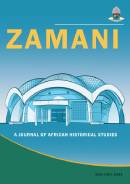Nurturing Traditional Midwifery and Medicine: The Entangled Path of Health Integration in Post-Independence Kilombero, Tanzania.
Keywords:
Midwifery, maternal health, traditional medicine, biomedicine, health hybridity, health futures, Tanzania.Abstract
This paper focuses on the Tanzanian government’s ambitious endeavour to enhance health, particularly midwifery services following independence. The initial strategy by the government involved promoting Western medicine by establishing healthcare facilities and training medical personnel. However, the strain of a burgeoning population and limited resources soon became evident, prompting the government to recognise the need for the incorporation of traditional medicine, previously overlooked. This integration posed its own set of obstacles, as the focus on herbal remedies overshadowed crucial aspects of conventional midwifery, such as rituals. While research has shown the resolve of the government towards medical integration between different players, this paper shows that incorporating other actors such as voluntary agencies and traditional health workers proved a formidable task for the post-independent government. Using examples from Kilombero District, this paper examines the complexities and setbacks of government planning in this context, highlighting how the intended path to improvement took unexpected turns, failures, and detours, leading to a re-evaluation of strategies and priorities on the part of the government, while the people embraced a hybrid of medical therapies.
Downloads
Published
How to Cite
Issue
Section
License
Copyright (c) 2024 Zamani: A Journal of African Historical Studies

This work is licensed under a Creative Commons Attribution-NonCommercial-ShareAlike 4.0 International License.
Once published, the author handles the rights to the journal. The author will be asked to sign a form consenting transfer of rights to Zamani Journal.

